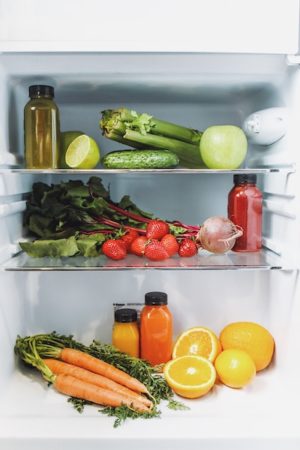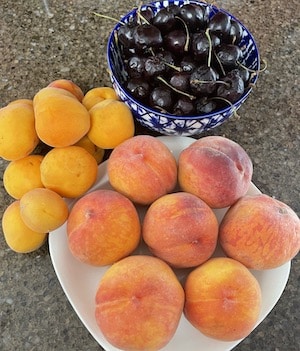Headlines highlight it, grocery stores address it and consumers talk about it, but how serious are we about the cost of food waste? In a recent Forbes article citing the cost of food waste, it is estimated that $400 billion dollars or 100 billion pounds of food are wasted each year. For supermarkets, that equates to $5,000 to $10,000 per week.1 Even though the article focused on incentives or disincentives the tax system may provide for the retail industry to address this issue, it is still our responsibility, as the consumers, to reduce food waste.
Higher food costs are a reality but how motivated are we to change our habits to reduce costs? Do we calculate how many dollars in food waste, especially produce, are thrown away every week? A few reminders about basic food storage can be a solution. Taking a bite out of food waste starts with savvy produce storage … a story beneath the headlines.
It’s About Care and Compatibility

It’s not just refrigerator storage (or not) that is the issue, but rather, which produce is the better “companion.” Compatibility matters when it comes to produce, due to the naturally occurring gas compounds that make fruits and vegetables ripen (and hasten their waste).
Meet Ethylene
Most fruits and vegetables produce the gas compound or hormone ethylene, which contributes to the ripening process. If fruit is unripe, it will have low levels of ethylene. But as produce (especially fruit) matures, the level of ethylene increases to induce the ripening.2 Hence why the commercial storage and temperature control of fresh produce is so important even before it arrives in the grocery stores. Like grocery stores, we need to understand the science behind keeping our produce at its best.
Based on their ripening process, there are two categories of fruits: climacteric and non-climacteric. Fruits like apples, pears, bananas or peaches are known as climacteric, or ethylene-producing, since the fruit continues to ripen and reaches its peak post-harvest. Think about the quality of a peach or pear after two to three days on the counter! Non-climacteric fruit, like grapes, blueberries or strawberries do not continue to ripen or release ethylene gas after harvesting.2 Hence, why these types of fruit need to be picked when fully ripe and typically stored in a refrigerator.
The Basics of Savvy Storage
Understanding the science behind fruit ripening can help preserve the quality of produce in our kitchens.

- Ethylene producing: Think produce with pits or seeds such apples, avocados, pears, peaches, melons like honeydew, mangos, ripening bananas, tomatoes and potatoes.
- Ethylene sensitive: Think vegetables! Broccoli, cauliflower, carrots, brussels sprouts, leafy greens, cucumbers, summer squash, peppers and any other veggie needing to be refrigerated. Unlike other melons, citrus or potatoes, watermelon, lemons, limes and sweet potatoes are ethylene sensitive so they should not be stored with their counterparts.
- Ethylene neutral: As in most cases there is always a “neutral” and it’s no different with produce! Some fruits and vegetables are non-sensitive, so storage “partners” are not an issue. These include berries (blueberries, raspberries and strawberries), cherries, pineapple, citrus like grapefruit and oranges (but not lemons and limes), green beans and ripened tomatoes.
A Big Deal?
Does it really make a difference separating ethylene sensitive and ethylene producing produce? Bottom line, it can! Laura Strawn, an associate professor and extension specialist at Virginia Tech’s Department of Food Science & Technology, says the major issues are spoilage and shortened shelf life.4 She notes that exposure to ethylene can cause broccoli and cabbage to yellow, cucumbers to pit and carrots to turn bitter, as well as lettuce greens to wilt. Even though improper storage issues can be more costly in commercial settings, it still can affect our bottom dollar! Fresh fruits and vegetables are “prized possessions.” Take the time to maintain their worth. Follow the basic guidelines. A few extra minutes in the kitchen can keep the shine on our fruits and vegetables and money in our pocket!
References
1. “Food Waste Costs U.S. Taxpayers Billions of Dollars A Year,” Forbes, Jul 14, 2022.
2. “Ethylene and the Regulation of Fruit Ripening,” by Annabelle Capino and Macarena Farcuh, University of Maryland Extension, July 22, 2021.
3. “Ethylene in Fruits and Vegetables: Correctly store fruits and vegetables to reduce food waste,” UC San Diego Altman Clinical & Translational Research Institute.
4. “Which fruits and vegetables should and shouldn’t be stored together,” by Becky Krystal, Washington Post, May 31, 2022.
